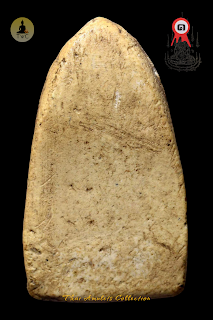Phra Pong Pim Yuen Um Bat Lek Luang Pu Poo (Lp Poo / Lp Pu) Wat Intharawihan (90% Customised Gold Casing ) - Won 1st in the competition
1. Amulet Overview
-
Name: Phra Pong Pim Yuen Um Bat Lek
-
Monk: Luang Pu Poo (also known as Lp Poo / Lp Pu)
-
Temple: Wat Intharawihan, Phra Nakhon, Bangkok
-
Material: Sacred Pong (powder)
-
Casing: 90% custom gold casing
-
Recognition: Awarded 1st place in a certified Thai amulet competition
2. Temple Background
-
Wat Intharawihan is a historic Third-Class Royal Temple under the Dhammayuttika Nikaya sect.
-
It is renowned for housing Luang Pho To, a 32-meter standing Buddha image originally conceptualized by Somdej Phra Buddhacarya (To Phrommarangsi).
-
The temple has a strong reputation for consecrated amulets, meditation lineage, and ceremonial discipline.
3. Purpose of Creation
-
Created to commemorate a significant Buddhist ceremony and raise funds for temple renovations and charitable missions.
-
The amulet embodies blessings for:
-
Prosperity and abundance
-
Safety and protection
-
Spiritual power and charisma
-
4. Material Composition
-
Made from sacred powder (Phong) collected from multiple temple sources and mixed with:
-
Crushed herbs and relics
-
Incense ash from past ceremonies
-
Blessed soil or temple brick powder
-
-
Carefully compressed and molded in the traditional “Pim Yuen Um Bat Lek” form.
5. Consecration Ceremony
-
The amulet underwent a grand Phuttha Phisek (Buddha blessing ceremony) at Wat Intharawihan.
-
Lead officiant: Luang Pu Poo
-
Monks involved in the ceremony (sample names may vary based on the specific ceremony date, commonly invited monks include):
-
Luang Pho Perm, Wat Klang Bang Kaew
-
Luang Pu Sawai, Wat Phothong
-
Phra Ajahn Sakorn, Wat Nong Grub
-
Phra Ratchasithachan, Wat Intharawihan
-
-
Ceremony included:
-
Chanting of the Chinnabanchorn Katha 108 rounds
-
Incense and holy water blessing
-
Overnight prayer vigil by senior monks
-
6. Physical Features
-
Size: Small form (Pim Lek), lightweight but highly detailed.
-
Front: Seated Buddha posture in bat-holding mudra, surrounded by protective aura lines.
-
Back: Sometimes includes temple stamp, Yant inscriptions, or a trace of monk’s thumbprint (for authentication).
-
Casing: 90% gold, handcrafted with open-front design for visual display. Often features temple seals or serial codes.
7. Awards and Recognition
-
The amulet was submitted to a national-level Thai amulet competition (hosted by Samakom or DD-Pra).
-
Judged on criteria:
-
Craftsmanship and symmetry
-
Historical relevance and materials
-
Monk lineage and temple background
-
Condition and authenticity
-
-
Result: Won First Place in its category, making it a highly respected and sought-after collector’s item.
8. Spiritual Significance
-
Believed to offer:
-
Metta Maha Niyom (loving-kindness and popularity)
-
Klaew Klaad (danger evasion)
-
Maha Lap (wealth and fortune)
-
Kongkraphan Chatri (invulnerability)
-
-
Preferred by:
-
Business owners for prosperity
-
Travelers for protection
-
Collectors for its competition-winning prestige
-
9. Collectibility and Value
-
Due to its origin, consecration, and certification, it is a:
-
High-value amulet in the modern market
-
Often housed in private collections or worn with pride
-
Limited in availability due to competition award status and custom gold casing
-

%20Luang%20Pu%20Poo%20(Lp%20Poo%20:%20Lp%20Pu)%20Wat%20Intharawihan%20-%20Won%201st%20in%20the%20competition.png)







.png)



.png)
%20Wat%20Rakang.png)

%20Wat%20Thepsirin%20Issued%20to%20Wat%20Sin%20Khan.png)
